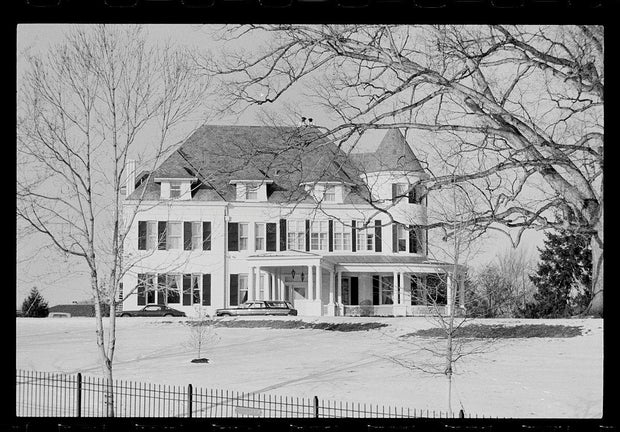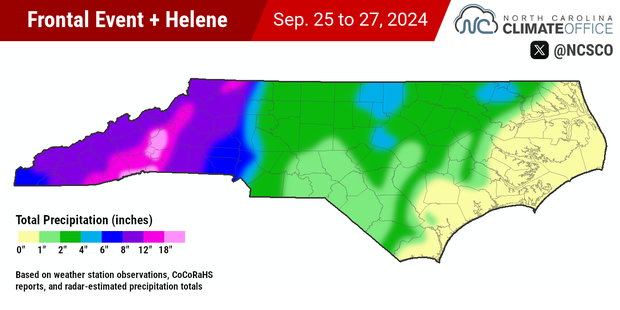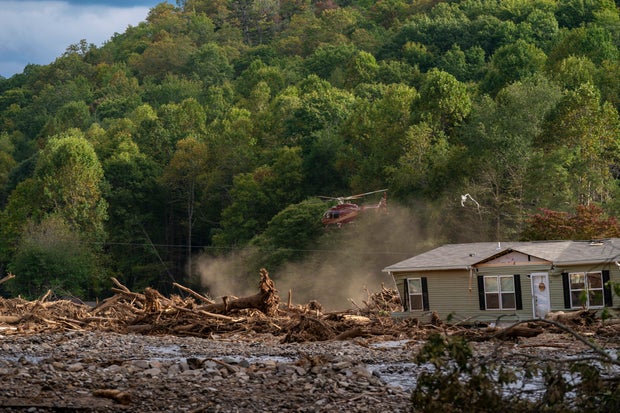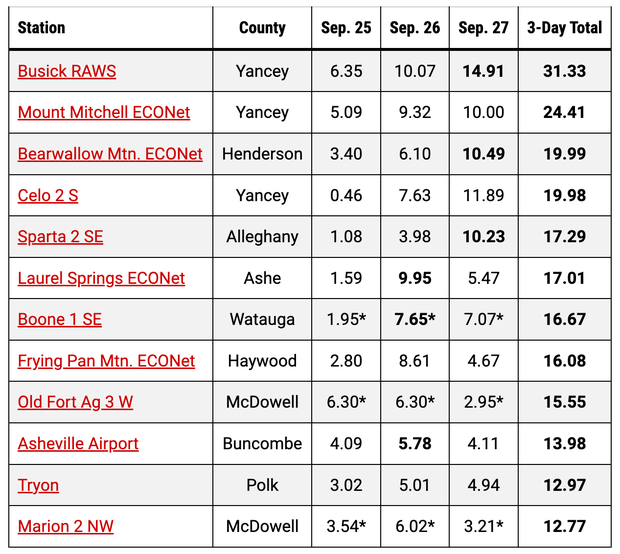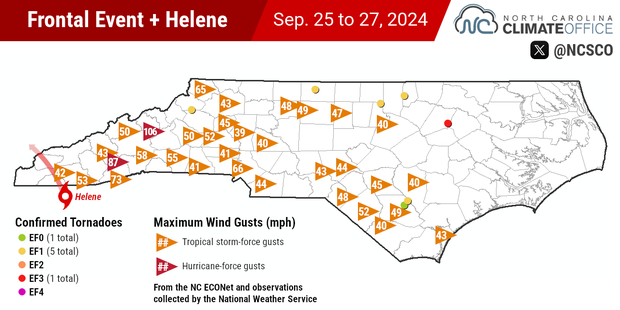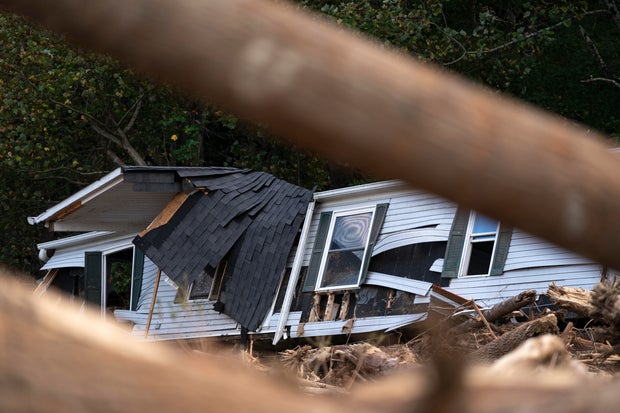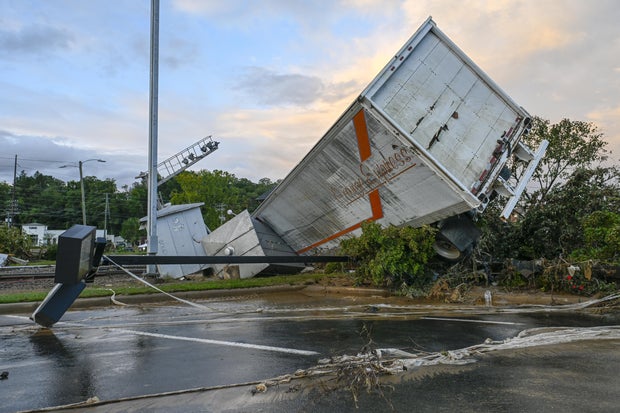CBS News
Where does the vice president live? Inside the house at 1 Observatory Circle

The most well-known address in the United States is perhaps 1600 Pennsylvania Avenue, the president’s home and epicenter of the U.S. government. But what about the nation’s vice president? Where does the second-in-command live?
When they’re not at their office in the White House, or jet-setting around the world, they too, reside in Washington D.C., albeit across the city from the White House
The house that’s served as the stomping grounds for every vice president from Walter Mondale to Kamala Harris is .
Katherine Frey/The Washington Post via Getty Images
Where do vice presidents live during their term?
Tucked away in the northwestern quadrant of D.C. is another white house, this one home to the vice president. The nineteenth century home, located at 1 Observatory Circle, is on the grounds of the U.S. Naval Observatory, which serves as a hub for astronomical research on all things in the sea, on land and in space.
The three-story house doubles as a roost for the VP and an office outpost. Vice presidents in the past have been known to host guests on the property, including foreign leaders and dignitaries, like President Andrés Manuel López Obrador of Mexico.
Kent Nishimura / Los Angeles Times via Getty Images
The 73-acre plot is bordered by a dense green forest, which serves as an effective insulator from the hustle and bustle of nearby Massachusetts Avenue.
What is 1 Observatory Circle like inside?
Inside the 9,000-square-foot house is 33 rooms, dedicated for both public and private use, with highlights including a heated outdoor pool, library, and sunlit solarium.
“It’s not a fancy house, but it’s a very livable house,” Geoff Chester, a longtime public affairs officer for the observatory, told CBS News in 2017.
Katherine Frey/The Washington Post via Getty Images
Katherine Frey/The Washington Post via Getty Images)
The interior design shifts with each newcomer, serving as a reflection of their personal style. For Harris, it was a mixture of modern elements and hommages to her cultural heritage from India and Africa, Architectural Digest reported.
In addition to housing famous politicians, 1 Observatory Circle is also home to a relic of history: the atomic clock, the most precise time scale in the world.
Is the official VP residence near the White House?
One Observatory Circle is over 2 miles from 1600 Pennsylvania Avenue. Both are located in Northwest D.C.
What’s the history of the Vice President’s residence?
The house at 1 Observatory Circle, designed by local architect Leon Dessez, lived an entire life of its own before former Vice President Walter Mondale got the keys in 1977.
Built in 1893 for $20,000, the home was first occupied by a series of superintendents who worked for the naval observatory. In that period, it was fittingly named the “Superintendent’s House.”
According to the White House lore, the house was such an appealing place to live, that in the 1920s, the chief of naval operations – the highest-ranking officer in the Department of the Navy – kicked out the superintendent so he could move in.
In 1974, Congress decided to revamp the space and designate it as a home for the vice presidents, who up until that point had to secure their own accommodations.
Nelson A. Rockefeller, who was vice president under Gerald Ford, used the house for entertaining — even VPs need a place to party – but it wasn’t until 1977 that the home had its first official VP resident: Walter Mondale of Minnesota, vice president to former President Jimmy Carter.
Thomas J. O’Halloran / Library of Congress
Since then, vice presidents George H. W. Bush, Dan Quayle, Al Gore, Dick Cheney, Joe Biden, Mike Pence and Kamala Harris and their families have all rotated through the home.
Before the U.S. Naval Observatory was built, the land the residence stands on belonged Margaret C. Barber, a widow who held 34 enslaved people on the property, according to the New York Times.
After the 2024 election, the residence will pass from the hands of Harris and husband Doug Emhoff to either Harris’ running mate, Gov. Tim Walz of Minnesota, or JD Vance, former President Donald Trump’s VP pick.
CBS News
Here’s how Hurricane Helene brought “biblical devastation” to western North Carolina in a near “worst-case scenario”

Hurricane Helene has proved to be disastrous for Appalachia, as massive amounts of precipitation from the storm caused rampant flooding that has devastated several towns and killed dozens of people. On Monday, the North Carolina State Climate Office provided a picture of how the “monster storm” was nearly a “worst-case scenario for western North Carolina.”
“Torrential rainfall from the remnants of Hurricane Helene capped off three days of extreme, unrelenting precipitation, which left catastrophic flooding and unimaginable damage in our Mountains and southern Foothills,” a post from the office says. “… the full extent of this event will take years to document – not to mention, to recover from.”
Here’s how the climatologists said it happened.
North Carolina was saturated with rain before Helene hit
North Carolina State Climate Office
As Helene became a Category 1 hurricane in the Gulf of Mexico — more than 500 miles and 30 hours away from where it would eventually make landfall in Florida — western North Carolina was already seeing rain. The climate office says that Helene’s outskirts were feeding tropical moisture to slow-moving storms that had formed along a stalled cold front.
By midnight on Thursday — roughly an hour after Helene’s landfall 10 miles north of Steinhatchee, Florida — Asheville Airport in North Carolina had already seen more than 4 inches of rain. That downpour continued before Helene’s outerbands even moved in. By Thursday night, Yancey County, which sits just south of Erwin, Tennessee, where floodwaters became so bad that people were trapped on the roof of a hospital, had seen more than 9 inches of rain.
/ Getty Images
Water was already beginning to inundate cities, “all while the heaviest rain from Helene was just beginning to fall,” the climate office said. The more than 300 miles of tropical storm-force winds Helene produced only amplified the situation, pushing more moisture up mountains.
“The storm’s impacts were especially long-lasting because of its massive size. It developed in a high-humidity environment over the warm Gulf of Mexico, which let it grow and strengthen unimpeded,” the office said. “…From the start of the precursor frontal showers on Wednesday evening to the heart of Helene moving through on Friday morning, it was one of the most incredible and impactful weather events our state has ever seen.”
Record rain brings reports of “biblical devastation”
From Wednesday to Friday, the office said that there were more than 8 inches of rain across the western North Carolina mountains, with some areas seeing a foot or more. The highest rainfall total was in Busick, with a three-day total of 31.33 inches — more than 2.5 feet.
At least a dozen weather stations recorded their wettest three-day periods on record, the office said. Asheville Regional Airport lost communications on Friday morning after Helene’s landfall, but had already reported just under 14 inches of rain. That amount, the office said, was “nearly three months’ worth of precipitation … in less than three days.”
North Carolina State Climate Office
All of that rain caused rivers to flood, landslides and mudslides, leading to rescues across several counties.
In Buncombe County, home to Asheville, Emergency Services Assistant Director Ryan Cole told the Citizen-Times that “catastrophic devastation” didn’t accurately describe the impact the deluge had.
“It would go a little bit further and say we have biblical devastation through the county,” Cole said. “We’ve had biblical flooding here and it has been extremely significant.”
The newspaper quoted county manager Avril Pinder as saying, “this is looking to be Buncombe County’s own Hurricane Katrina.”
Rare mountain tornado as Helene’s winds move in
North Carolina State Climate Office
“Helene brought the full suite of hurricane impacts to North Carolina,” the climate office said, “and in full force just hours after its landfall at Category-4 strength.”
The winds from Helene were felt across western North Carolina, with the Charlotte Airport recording the strongest wind gusts it’s seen since a thunderstorm microburst in August 2019. The winds, which surpassed hurricane speeds in some places, contributed to widespread power outages. Millions were left without power across several states because of Helene, and as of Tuesday morning, hundreds of thousands remain without electricity in North Carolina alone.
/ Getty Images
On Wednesday evening, as the state battled existing storms ahead of Helene, a rare mountain tornado formed in Watauga County, the first it had seen since 1998. The day after Helene made landfall, at least six tornadoes were confirmed, including an EF3 in Rocky Mount that destroyed several buildings.
A historic and deadly storm
CBS News has confirmed that at least 131 people across several states were killed by Helene. Buncombe County alone has reported at least 40 deaths, including a 7-year-old who was swept away by floodwaters with his grandparents.
While hundreds of people were able to be rescued, there have been even more requests for welfare checks. And given the severity of the damage, the climate office said that suggests “the death toll is likely to climb as hard-hit areas are finally accessed in the coming days.”
“Sadly, our state’s long-running benchmark for deaths during a tropical event – approximately 80 during the mountain region’s July 1916 flood – could be in jeopardy from this storm that has already broken plenty of other records,” the climate office said, adding that the 1916 event was the area’s flood of record for more than a century — a title that “now belongs to Helene instead.”
Several rivers surpassed their highest-ever crests by several feet, including the Swannanoa River, which saw “the worst flood along the river since North Carolina became a state,” the office said.
Peter Zay/Anadolu via Getty Images
As unprecedented as Helene’s impact on the region was, there is a chance it won’t be the last.
“The rapid intensification of Helene over the Gulf, the amount of moisture available in its surrounding environment, and its manifestation as locally heavy – and in some cases, historically unheard of – rainfall amounts are all known side effects of a warmer atmosphere,” the office said.
Last year was already the warmest humans had ever recorded and 2024 has seen countless heat records. The continued use of fossil fuels releases greenhouse gases that are trapping heat within the atmosphere, increasing average temperatures that fuel extreme weather events like Helene.
It’s unclear when an event like Helene would downpour on Appalachia again, but the climate office is near-certain about one thing: “We won’t see another Helene in the Atlantic.”
Officials often retire hurricane names when they are particularly devastating, and while such action has yet to be announced, the climatologists suggest it may only be a matter of time.
CBS News
Thousands of port workers go on strike, shutting down East and Gulf Coast ports

Watch CBS News
Be the first to know
Get browser notifications for breaking news, live events, and exclusive reporting.
CBS News
GOP Rep. Elise Stefanik on VP debate

Watch CBS News
Be the first to know
Get browser notifications for breaking news, live events, and exclusive reporting.






